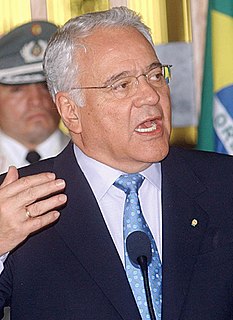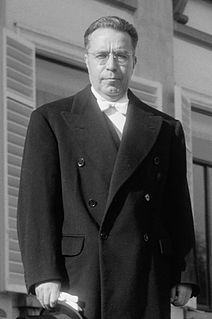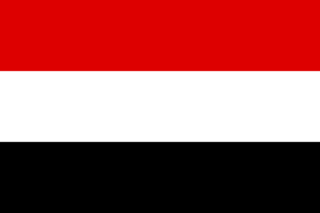Campaign
In the initial months of 1989, the Revolutionary Nationalist Movement (MNR) tried in vain to postpone the election date, arguing that the deadline for electoral registration restricted citizen participation. In December 1988, the party's delegation in Congress had managed to amend the electoral law of 1986. Arguing that the new registration requirements, which limited registration to citizens who possessed cédulas de identidad (national identity cards), constituted a violation of universal suffrage, the MNR pushed through legislation that added birth certificates and military service cards as valid registration documents. Nationalist Democratic Action (ADN) refused to go along with its ally and eventually charged the MNR with conducting fraudulent registrations. By mid-February this issue had triggered the rupture of the pacto.
Voter registration is the requirement that a person otherwise eligible to vote register on an electoral roll before they will be entitled or permitted to vote. Such enrollment may be automatic or may require application being made by the eligible voter. The rules governing registration vary between jurisdictions. Some jurisdictions have "election day registration" and others do not require registration, or may require production of evidence of entitlement to vote at time of voting. In some jurisdictions registration by those of voting age is compulsory, while in most it is optional. In jurisdictions where registration is voluntary, an effort may be made to encourage persons otherwise eligible to vote to register, in what is called as a voter registration drive.
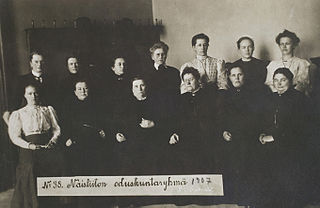
The concept of universal suffrage, also known as general suffrage or common suffrage, consists of the right to vote of all adult citizens, regardless of property ownership, income, race, or ethnicity, subject only to minor exceptions. In its original 19th-century usage by political reformers, universal suffrage was understood to mean only universal manhood suffrage; the vote was extended to women later, during the women's suffrage movement.
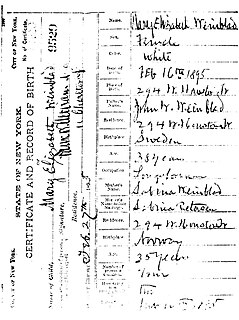
A birth certificate is a vital record that documents the birth of a child. The term "birth certificate" can refer to either the original document certifying the circumstances of the birth or to a certified copy of or representation of the ensuing registration of that birth. Depending on the jurisdiction, a record of birth might or might not contain verification of the event by such as a midwife or doctor.
The end of the pacto revealed an old reality about Bolivian politics. To achieve power, broad electoral alliances must be established; yet, electoral alliances have never translated into stable or effective ruling coalitions. On the contrary, electoral alliances have exacerbated the tensions built into a complex system. Thus, once in power, whoever controls the executive must search for mechanisms or coalitions such as the pacto to be able to govern. This search was the single most important challenge facing Bolivian politicians into the 1980s.

The politics of Bolivia takes place in a framework of a presidential representative democratic republic, whereby the president is head of state, head of government and head of a diverse multi-party system. Executive power is exercised by the government. Legislative power is vested in both the government and the two chambers of parliament. Both the Judiciary and the electoral branch are independent of the executive and the legislature. After the 2014 election, 53.1% of the seats in national parliament were held by women, a higher proportion of women than that of the population.
An electoral alliance is an association of political parties or individuals that exists solely to stand in elections. Other similar terms are bipartisan electoral agreement, electoral pactelectoral agreement, electoral coalition or electoral bloc.
The term "coalition" is the denotation for a group formed when two or more people, factions, states, political parties, militaries etc. agree to work together temporarily in a partnership to achieve a common goal. The word coalition connotes a coming together to achieve a goal.
As expected, every political party was forced to scramble for new allies. The ADN joined forces with the now minuscule Christian Democrats by naming Ossio Sanjinés as Banzer's running mate in an effort to attract other political elements. Banzer led every major poll, and the ADN repeatedly called for Congress to respect the first majority to emerge from the May 7 election.

The Christian Democratic Party is a progressive Christian-democratic political party in Bolivia.
The situation was more complex in the MNR where, after a bitter internal struggle, Gonzalo Sánchez de Lozada, a pragmatic former Minister of Planning and Coordination and prominent entrepreneur, captured the party's nomination. The MNR's strategy was to develop Sánchez de Lozada's image as a veteran movimientista (movement leader) to capture populist support. At the same time, party strategists intended to attract support from outside the party by building on the candidate's entrepreneurial background. The task of converting the candidate into an old party member apparently succeeded: old-line populist politicians dominated the first slots on the party's legislative lists. The naming of former President Walter Guevara Arze as the vice presidential candidate was perceived as further evidence of the party's success in influencing the candidate.
Following a similar electoral logic, the MIR sought to broaden its base of support by establishing ties with several parties, including Carlos Serrate Reich's 9 April Revolutionary Vanguard, the Revolutionary Front of the Left, and a number of dissidents from the MNRI. Paz Zamora, the MIR's candidate, led in some polls, and most analysts agreed that he would pose a significant threat to the MNR and ADN.
The left attempted a comeback following the disastrous experience of the UDP years. Headed by Antonio Aranibar's Free Bolivia Movement, the left grouped into a broad front labelled the United Left (IU). The IU brought together splinter factions of the MIR, the Socialist Party-1, and the Communist Party, and it counted on the support of organized labor, especially the COB. Given the historical divisions within the Bolivian left, however, the IU was not perceived to be a serious contender. If it could maintain unity beyond the 1989 elections, observers believed that its impact might be greater than anticipated.
The main newcomer to national electoral politics, although no stranger to La Paz politics, was Carlos Palenque. Popularly known as el compadre (the comrade), Palenque was a former folksinger turned radio and television owner and talk show host. His "popular" style of broadcasting had always enjoyed widespread appeal in the working-class and marginal neighborhoods surrounding La Paz. For at least a decade, Palenque had been regarded as a possible candidate for mayor of La Paz; during the 1987 municipal elections, his name was under consideration by the MNR.
Palenque's move into national politics was prompted by the closing down of his television station for airing accusations made by an infamous drug trafficker, Roberto Suárez Goméz, against the Bolivian government. To promote his candidacy, Palenque founded Conscience of the Fatherland (Conciencia de la Patria—Condepa), which grouped together a bizarre strain of disaffected leftists, populists, and nationalists who had defected from several other parties.
Ten parties and fronts contested the election, which was held as scheduled on May 7, 1989. The results, a virtual three-way tie among the MNR, ADN, and MIR, were not surprising. As expected, Congress once again was given the task of electing the next president from the top three contenders. But the slight majority (a mere 5,815 votes) obtained by the MNR's candidate, Sánchez de Lozada, was surprising to observers, as was the unexpected victory by Palenque in La Paz Department. His showing was significant in a number of ways. First, it demonstrated that none of the major political parties had been able to attract lower middle-class and proletarian urban groups, who had flocked to el compadre; Palenque had wisely targeted marginal and displaced sectors of La Paz. Second, Condepa's showing reflected the growth of racial and ethnic tension in Bolivian electoral politics. For the first time in the history of the Bolivian Congress, for example, a woman dressed in native garb would serve as a deputy for La Paz Department.
Claims of fraud from every contender, especially in the recounting of the votes, clouded the legitimacy of the process. At one stage, fearing an agreement between the ADN and MIR, the MNR called for the annulment of the elections. Indeed, negotiations were well advanced between the MIR and ADN to upstage the relative victory obtained by the MNR. Between May and early August, the top three finishers bargained and manipulated in an attempt to secure control of the executive branch.
The composition of Congress exacerbated the tensions between the parties in contention. Because seventy-nine seats are needed to elect a president, compromise was indispensable. In mid-1989, however, it was unclear whether the political system in Bolivia had matured enough to allow for compromise.









